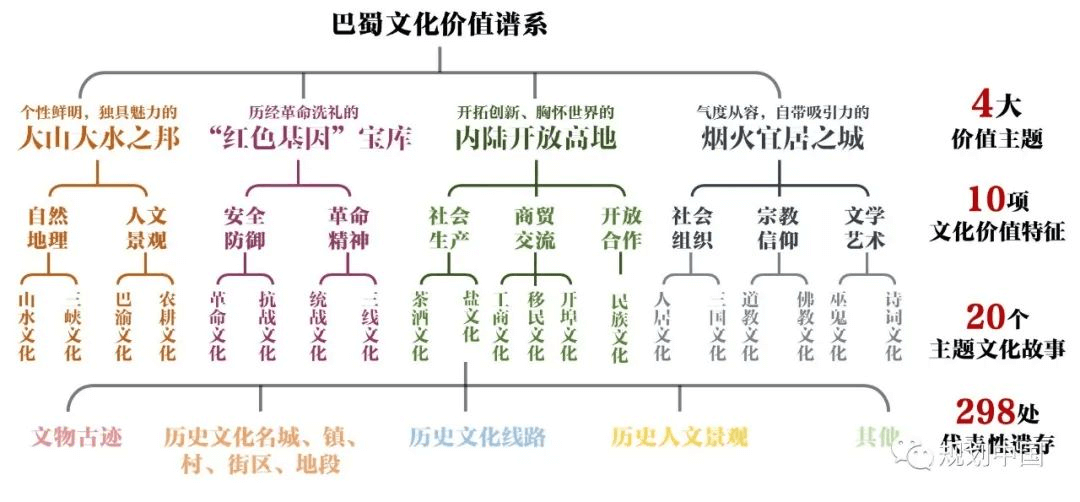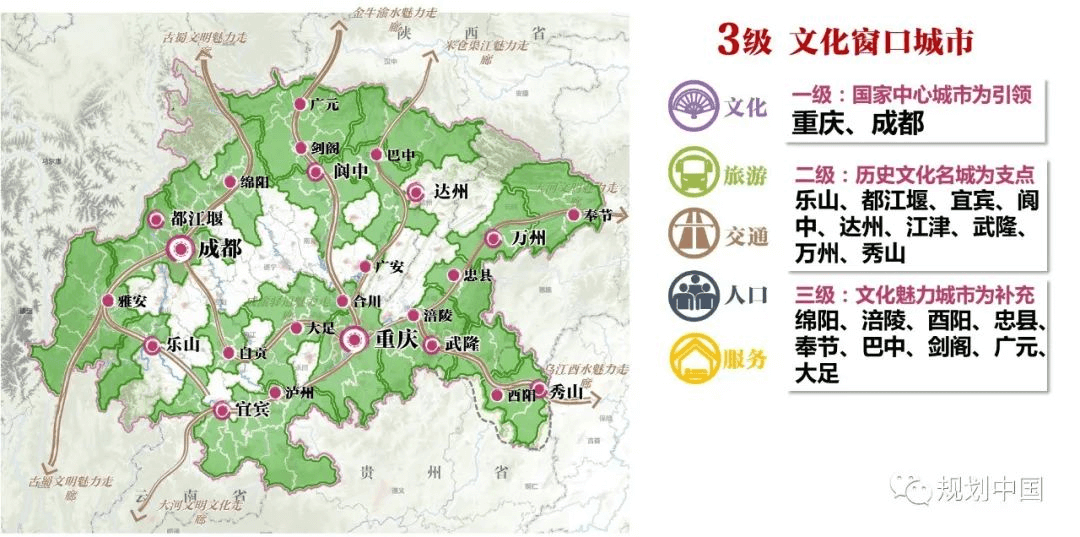Exploration and Practice of Bashu Cultural Preservation and Inheritance


Project classification:
Historical & Cultural Preservation & Inheritance
Person in charge:
Jia Ying
I. Location of Project
Chengdu, Sichuan Province, Chongqing and the area between the two cities
II. Measures of Preservation
Bashu culture figures prominently in the history of Chinese civilization, and preserving and inheriting Bashu culture is of great significance to protect of the Yangtze River civilization and promote the high-quality development of Chengdu-Chongqing region. Based on an in-depth study of historical books and with the help of archaeological evidence, field surveys, and expert interviews, the CAUPD traced the origin of Bashu area and explored ways to preserve and inherit Bashu culture through a series of measures.
First, reach regional consensus and establish the genealogy of Bashu cultural values with an "overall historical view". Summarize the characteristics of cultural values and thematic cultural stories by tappingBashu cultural themes, and identify the most representative cultural relics to form a genealogy of Bashu cultural values.
Second, break through administrative barriers and build a spatial pattern for regional historical and cultural preservation and inheritance. First, we carried out quantitative analysis of the natural & cultural resources of the whole region, and divided the regionvarious attraction areas according to the specific type of culture, so as to promote the integration of the same kind of cultural resources. Building on this, and using the ancient roads and important transportation corridors as links to connect various cultural units, we constructed the regional cultural corridors to coordinate cross-regional cultural preservation and utilization. Meanwhile, we developed major citiescultural windows and fostered the integrated development of attraction areas and urban-rural areas.
Third, for implementation, establish action guidelines and demonstration projects. The plan put forward the preservation and inheritance path and action guidelines of regional cultural units, corridors and window cities, placed specific responsibilities on competent Sichuan and Chongqing functional departments, and formulated major regional cultural preservation and inheritance projects.
Fourth, innovate the management system and establish a set of effective management structure. Break through the existing administrative boundaries and management modes, and explore the building of a management structure covering both the provincial and municipal levels and requiring concerted efforts of various functional departments.
III. Fruitful Results
First, cross-border exploration that breaks through disciplinary barriers and administrative constraints. Combining spatial planning with history, archaeology and administrative management, we made breakthrough from cultural values, spatial patterns and management mechanisms, built the system for preserving and inheriting Bashu culture, and arrived at research results that recognized by experts in the disciplines and tools that transcend the management constraints of administrative departments.
Second, technological innovation for building the regional cultural preservation and inheritance system. We established a preservation and inheritance system to fill up the gap in the current system of cross-provincial, -municipal and -regional preservation of historical and cultural resources, incorporated the results Chengdu-Chongqing territorial planning, implemented the national strategies, and coordinated the construction of the Sichuan-Chongqing historical and cultural preservation and inheritance system.
